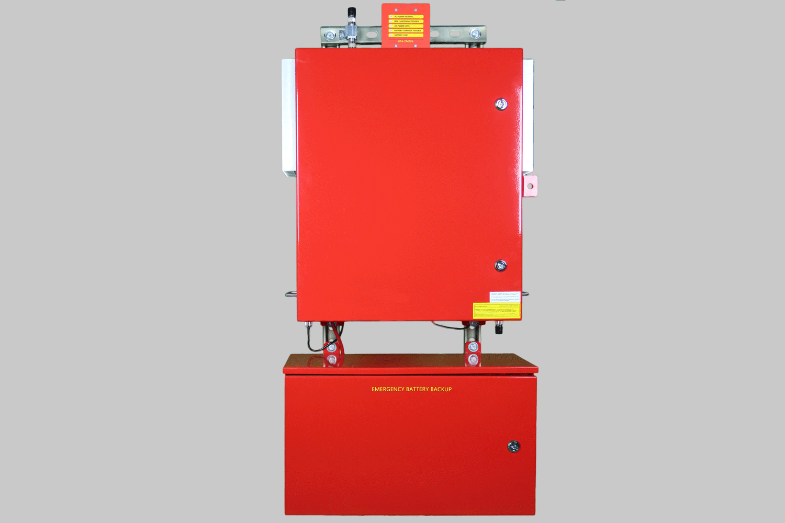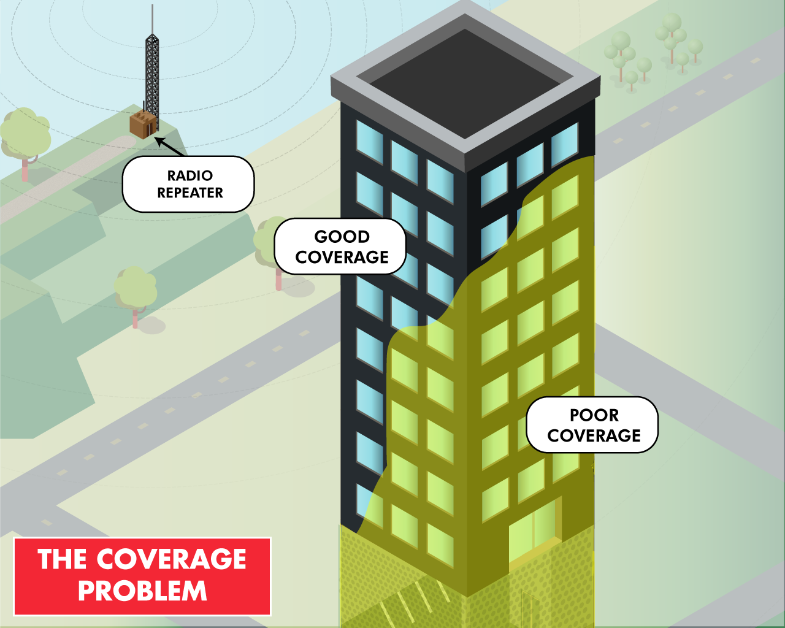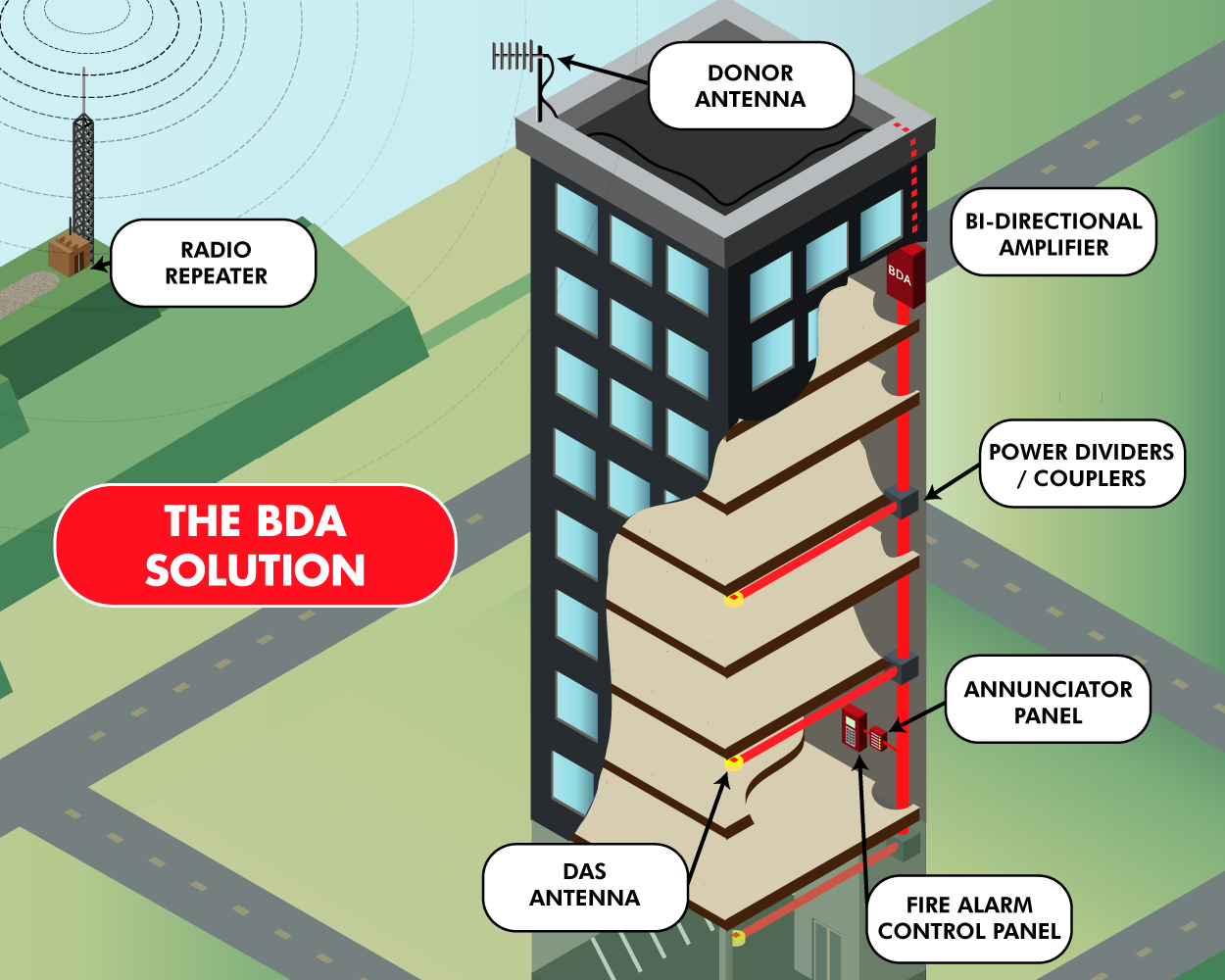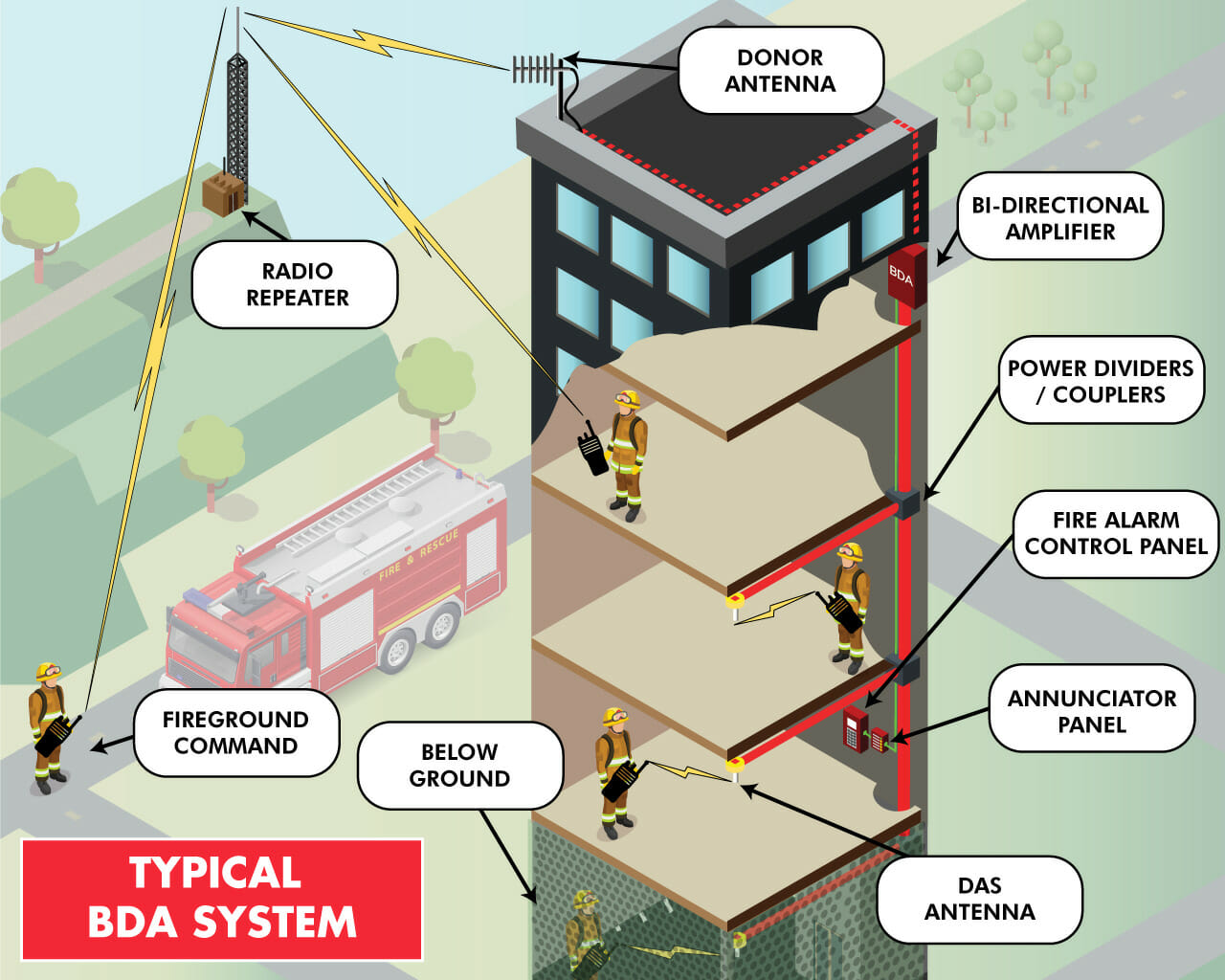Intro to Two-Way Radio
BDA Fundamentals
Codes & Regulations
Sales
Product Information
Design Process
Installation and Deployment
Service & Maintenance
What is a BDA?
You are here: Main > BDA Fundamentals > What is a BDA?
A BDA (Bi-Directional Amplifier) is also known as a Signal Booster.
A BDA is the main component of a BDA system or ERCES (Emergency Radio Communication Enhancement System).
A BDA is an amplifier that amplifies radio frequency (RF) signal in two directions simultaneously: from a subscriber to radio repeater system (uplink) and from the radio repeater system to the subscriber (downlink). BDAs can improve in-building coverage for radio communications, cellular signals and they are also occasionally used for outdoor coverage improvement.
Highlights:
-
BDAs are frequency band specific — they are built to amplify one or more frequencies/channels within a specific frequency band.
-
BDAs do not modulate, modify or otherwise distort radio signal — what goes in is what comes out.
-
A signal booster could also be a unidirectional amplifier (UDA) which amplifies a signal in only one direction.
-
BDAs need to be monitored by the building fire alarm system (per IBC/NFPA BDA systems must be monitored as supervisory signals).
-
This is a Life Safety System — usually purchased and installed at the same time as Fire Alarm Systems.
-
It is installed and tested by qualified (FCC GROL Licensed, manufacturer-certified) technicians and inspected by the AHJ.
-
Must meet code requirements and AHJ specifications — AHJ jurisdictions have different frequency requirements

The Coverage Problem
Fire, Police, EMS and other public safety personnel rely on two-way radios daily. Their personal safety, as well as the safety of the building occupants, depends on reliable communications. Public safety radio systems are designed to provide reliable outdoor radio signal coverage. However, signal coverage inside buildings and other structures is usually much weaker or non-existent. Building materials such as concrete, metal, Low-E glass etc attenuate (degrade) radio signals resulting in poor in-building coverage and “dead spots”.
The image below shows the typical scenario where part of the building that is underground and on the opposite side of the radio repeater site (highlighted yellow) has poor radio signal coverage.

The ERCES BDA Solution
To remedy the problem, we need to enhance radio signal in the part of the building that has poor radio signal coverage and to “fill in the dead spots”. An ERCES (Emergency Radio Communication Enhancement System) is required. The BDA system is the best way to enhance the in-building signal coverage, as illustrated below.
The BDA receives a signal from the Public Safety Radio Repeater through the donor antenna on the roof. The signal is then amplified by the BDA. The amplified signal is then distributed throughout the weak signal areas of the building.
Signal distribution is done by using coaxial cable, signal couplers, and antennas. This system is also known as DAS – Distributed Antenna System.

Typical BDA System Use Scenario
A typical fire-ground operation involves firefighters inside the building, fireground command and fire station radio dispatch center. Everyone needs to be able to clearly communicate with each other. Properly designed and deployed system will provide reliable coverage throughout the building so that firefighters, police officers and EMS can communicate reliably regardless if they are inside or outside the building.
The illustration below shows the typical communications paths.
